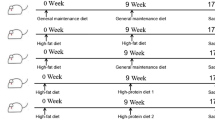Play all audios:

We determined the circulating level of bioactivity for skeletal muscle proteolysis-inducing factors (PIF) in the blood samples from cancer patients whose body weight loss was greater than
10%. The level of bioactivity was estimated by measurement of tyrosine release from isolated 1at diaphragm muscles incubated with an ultrafiltered fraction of plasma or serum proteins
containing molecules from 0 to 25 kDa in molecular weight. Significant levels of bioactivity were detected in 25 of the 50 cancer samples. No activity was found in 18 of the samples from
healthy human blood donors. The ability of 13 of the cancer samples to induce muscle proteolysis was significantly inhibited by incubation of muscles in presence of indomethacin (10 microM).
The neutralisation of 12 of the cancer samples with the antibodies to recombinant human interleukin-1 (IL-1), alpha and beta forms, partially abrogated the activity in five samples. These
results suggest that the accelerated breakdown of proteins induced by the cancer plasma factors is at least in part mediated by IL-1 in cooperation with other active factors not yet defined.
Additionally, we have shown that the increased breakdown of proteins induced by PIF in the crude supernatant derived from activated mouse peritoneal macrophages is prevented by the
treatment of muscles with either indomethacin or quin-2 (1 microM). These observations provide indirect evidence for a possible causal relationship between the production of PIF and the
body-weight loss of cancer patients.
Anyone you share the following link with will be able to read this content:
